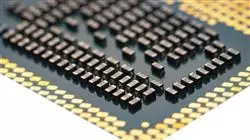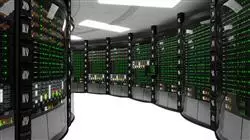University certificate
The world's largest faculty of information technology”
Introduction to the Program
Achieve the desired quality improvement by leveraging the knowledge provided by this Postgraduate diploma”

Parallel Computing encompasses a broad range, from the architecture of the systems themselves to the programming of algorithms. It includes the design of hardware devices and the subsequent implementation of software that takes full advantage of this configuration. To secure their place in the best projects and leadership positions, the computer scientist must not only have a deep understanding of one of today's most prevalent programming models but also master it.
Thus, this Postgraduate diploma starts by providing a general overview of what parallelism in Parallel Computing entails. It then delves into the programming of parallel algorithms and concludes with an in-depth analysis of the various types of parallel architectures.
The teaching team has devoted special attention to the development of all the contents of this degree, placing significant emphasis not only on the most advanced theory but also on their own professional experience. The program is thus enriched by the teachers' own contributions, as they adapt all the content of Parallel Computing to the realities of today's labor market.
The 100% online format of the diploma is also noteworthy, as it provides a preferred option for computer scientists who aim to delve deeper into the subject without having to compromise their personal and professional responsibilities. This program is accessible for download on any device with an internet connection, eliminating the need for in-person classes and rigid schedules.
Enroll today in this Postgraduate diploma in Parallel Computing and embark on a journey to uncover all the secrets of multiprocessors and OpenMP. Don't wait any longer to seize this opportunity!”
This Postgraduate diploma in Parallel Computing contains the most complete and up-to-date program on the market. The most important features include:
- The program incorporates the development of case studies that are presented by experts in Parallel Computing
- The program is designed with graphical, schematic, and highly practical content, which gathers essential information about disciplines that are crucial for the professional practice
- Practical exercises where self-assessment can be used to improve learning
- Its special emphasis on innovative methodologies
- The program incorporates theoretical lessons, interactive question-and-answer sessions with experts, and individual reflection assignments
- Content that is accessible from any fixed or portable device with an Internet connection
By enrolling in this program, you will gain exclusive access to a diverse array of multimedia resources. These resources include meticulously crafted videos, personally tailored by the professors themselves for each topic covered in the program”
The teaching staff of the program consists of professionals from the industry who bring their valuable work experience to the table. Additionally, renowned specialists from leading societies and prestigious universities contribute their expertise to enrich the program.
The program's multimedia content, created using state-of-the-art educational technology, enables professionals to learn in a contextual and situated learning environment. This simulated environment offers immersive education specifically designed to prepare individuals for real-world situations.
The design of this program places a strong emphasis on Problem-Based Learning. Throughout the academic year, professionals are presented with various real-world practice situations that they must strive to solve, enabling them to apply their knowledge in practical scenarios. For this purpose, the student will be assisted by an innovative interactive video system created by renowned and experienced experts.
At TECH, you have the autonomy to make crucial decisions, such as determining when, where, and how to undertake the entire teaching load"

Give your resume a high-quality boost and position yourself advantageously to secure better job positions in your IT career"
Why study at TECH?
TECH is the world’s largest online university. With an impressive catalog of more than 14,000 university programs available in 11 languages, it is positioned as a leader in employability, with a 99% job placement rate. In addition, it relies on an enormous faculty of more than 6,000 professors of the highest international renown.

Study at the world's largest online university and guarantee your professional success. The future starts at TECH”
The world’s best online university according to FORBES
The prestigious Forbes magazine, specialized in business and finance, has highlighted TECH as “the world's best online university” This is what they have recently stated in an article in their digital edition in which they echo the success story of this institution, “thanks to the academic offer it provides, the selection of its teaching staff, and an innovative learning method aimed at educating the professionals of the future”
A revolutionary study method, a cutting-edge faculty and a practical focus: the key to TECH's success.
The most complete study plans on the university scene
TECH offers the most complete study plans on the university scene, with syllabuses that cover fundamental concepts and, at the same time, the main scientific advances in their specific scientific areas. In addition, these programs are continuously being updated to guarantee students the academic vanguard and the most in-demand professional skills. In this way, the university's qualifications provide its graduates with a significant advantage to propel their careers to success.
TECH offers the most comprehensive and intensive study plans on the current university scene.
A world-class teaching staff
TECH's teaching staff is made up of more than 6,000 professors with the highest international recognition. Professors, researchers and top executives of multinational companies, including Isaiah Covington, performance coach of the Boston Celtics; Magda Romanska, principal investigator at Harvard MetaLAB; Ignacio Wistumba, chairman of the department of translational molecular pathology at MD Anderson Cancer Center; and D.W. Pine, creative director of TIME magazine, among others.
Internationally renowned experts, specialized in different branches of Health, Technology, Communication and Business, form part of the TECH faculty.
A unique learning method
TECH is the first university to use Relearning in all its programs. It is the best online learning methodology, accredited with international teaching quality certifications, provided by prestigious educational agencies. In addition, this disruptive educational model is complemented with the “Case Method”, thereby setting up a unique online teaching strategy. Innovative teaching resources are also implemented, including detailed videos, infographics and interactive summaries.
TECH combines Relearning and the Case Method in all its university programs to guarantee excellent theoretical and practical learning, studying whenever and wherever you want.
The world's largest online university
TECH is the world’s largest online university. We are the largest educational institution, with the best and widest online educational catalog, one hundred percent online and covering the vast majority of areas of knowledge. We offer a large selection of our own degrees and accredited online undergraduate and postgraduate degrees. In total, more than 14,000 university degrees, in eleven different languages, make us the largest educational largest in the world.
TECH has the world's most extensive catalog of academic and official programs, available in more than 11 languages.
Google Premier Partner
The American technology giant has awarded TECH the Google Google Premier Partner badge. This award, which is only available to 3% of the world's companies, highlights the efficient, flexible and tailored experience that this university provides to students. The recognition as a Google Premier Partner not only accredits the maximum rigor, performance and investment in TECH's digital infrastructures, but also places this university as one of the world's leading technology companies.
Google has positioned TECH in the top 3% of the world's most important technology companies by awarding it its Google Premier Partner badge.
The official online university of the NBA
TECH is the official online university of the NBA. Thanks to our agreement with the biggest league in basketball, we offer our students exclusive university programs, as well as a wide variety of educational resources focused on the business of the league and other areas of the sports industry. Each program is made up of a uniquely designed syllabus and features exceptional guest hosts: professionals with a distinguished sports background who will offer their expertise on the most relevant topics.
TECH has been selected by the NBA, the world's top basketball league, as its official online university.
The top-rated university by its students
Students have positioned TECH as the world's top-rated university on the main review websites, with a highest rating of 4.9 out of 5, obtained from more than 1,000 reviews. These results consolidate TECH as the benchmark university institution at an international level, reflecting the excellence and positive impact of its educational model.” reflecting the excellence and positive impact of its educational model.”
TECH is the world’s top-rated university by its students.
Leaders in employability
TECH has managed to become the leading university in employability. 99% of its students obtain jobs in the academic field they have studied, within one year of completing any of the university's programs. A similar number achieve immediate career enhancement. All this thanks to a study methodology that bases its effectiveness on the acquisition of practical skills, which are absolutely necessary for professional development.
99% of TECH graduates find a job within a year of completing their studies.
Postgraduate Diploma in Parallel Computing
In today's era, where speed and performance are essential, parallel computing has become a fundamental tool for solving complex problems and maximizing the potential of computer systems. If you are interested in exploring the limits of computing and learning how to make the most of the available resources, you have come to the right place. At TECH Global University you will find the Postgraduate Diploma in Parallel Computing that will help you achieve this goal. This program, taught in 100% online mode, will provide you with the necessary knowledge to understand and apply the principles of parallel computing in different environments and platforms. Through a combination of theory and practice, you will learn from the fundamentals of parallel computing to advanced techniques and real-world applications.
Get your diploma from the world's largest online faculty of computer science
.
At TECH we are committed to your educational preparation, that is why we have designed this Postgraduate Diploma that will allow you to develop your skills and talents effectively. Guided by an educational model of international prestige that condenses the best learning methodologies, along with advanced interactive content and mentoring from experts in the field, we provide you with a quality qualification without the need to attend a classroom and free of fixed schedules. Through the education provided, you will master parallel system architecture, parallel programming, optimization techniques and practical applications. As a result, you will be prepared to face the challenges of parallel computing, making the most of the available computing resources. This will help you to find better job opportunities. Enroll now!







